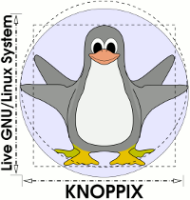First Knoppix 7.0 update arrives
 Later than originally planned, Knoppix creator Klaus Knopper has released an update to version 7.0 of his popular Live Linux distribution. The first point update to Knoppix 7.0, which was a special "CeBIT Edition" from March, includes a number of improvements and package upgrades, while removing proprietary packages, such as Adobe Reader.
Later than originally planned, Knoppix creator Klaus Knopper has released an update to version 7.0 of his popular Live Linux distribution. The first point update to Knoppix 7.0, which was a special "CeBIT Edition" from March, includes a number of improvements and package upgrades, while removing proprietary packages, such as Adobe Reader.
The new release of the Debian-based live distribution uses the 3.3.7 Linux kernel and LXDE (Lightweight X11 Desktop Environment) as its default desktop environment. The DVD version of Knoppix also includes a choice of GNOME 3.4 or KDE SC 4.7.4 (the current release is KDE SC 4.8.3 from early May), and additional packages such as VirtualBox 4.1.4.
Package upgrades include version 3.5.3 of the LibreOffice productivity suite, Wine 1.5.4, Chromium 18 and Iceweasel 10, the re-branded version of the Firefox web browser for Debian. It now has version 1.4 of the open source ADRIANE (Audio Desktop Reference Implementation and Networking Environment) talking menu system for blind users. Other changes include better support for Broadcom Wi-Fi chipsets and experimental support for automatically detecting graphics cards with composite 3D extensions for the Compiz window manager.
Version 7.0 was a major update that, Knopper says, brought a number of under-the-hood changes. These included the move to using UTF-8 encoding and changes to the boot sequence that now load the graphics, keyboard and mouse drivers, before those for webcams and other hardware. Other changes are said to improve the distribution's overall performance.
A full list of changes and new features can be found in the release notes. Knoppix 7.0.1 can be downloaded as an English or German DVD ISO image from one of the project's mirrors. Knoppix is licensed under the GPL.
Bootable from a LiveDVD or USB Flash drive, Knoppix incorporates automatic hardware detection and on-the-fly decompression. It can be used, for example, to demonstrate Linux, as an educational CD or as a rescue system, or installed directly to a system.
See also:
- CeBIT 2012: Knoppix 7.0 presented, a report from The H.
(crve)
![Kernel Log: Coming in 3.10 (Part 3) [--] Infrastructure](/imgs/43/1/0/4/2/6/7/2/comingin310_4_kicker-4977194bfb0de0d7.png)

![Kernel Log: Coming in 3.10 (Part 3) [--] Infrastructure](/imgs/43/1/0/4/2/3/2/3/comingin310_3_kicker-151cd7b9e9660f05.png)
















